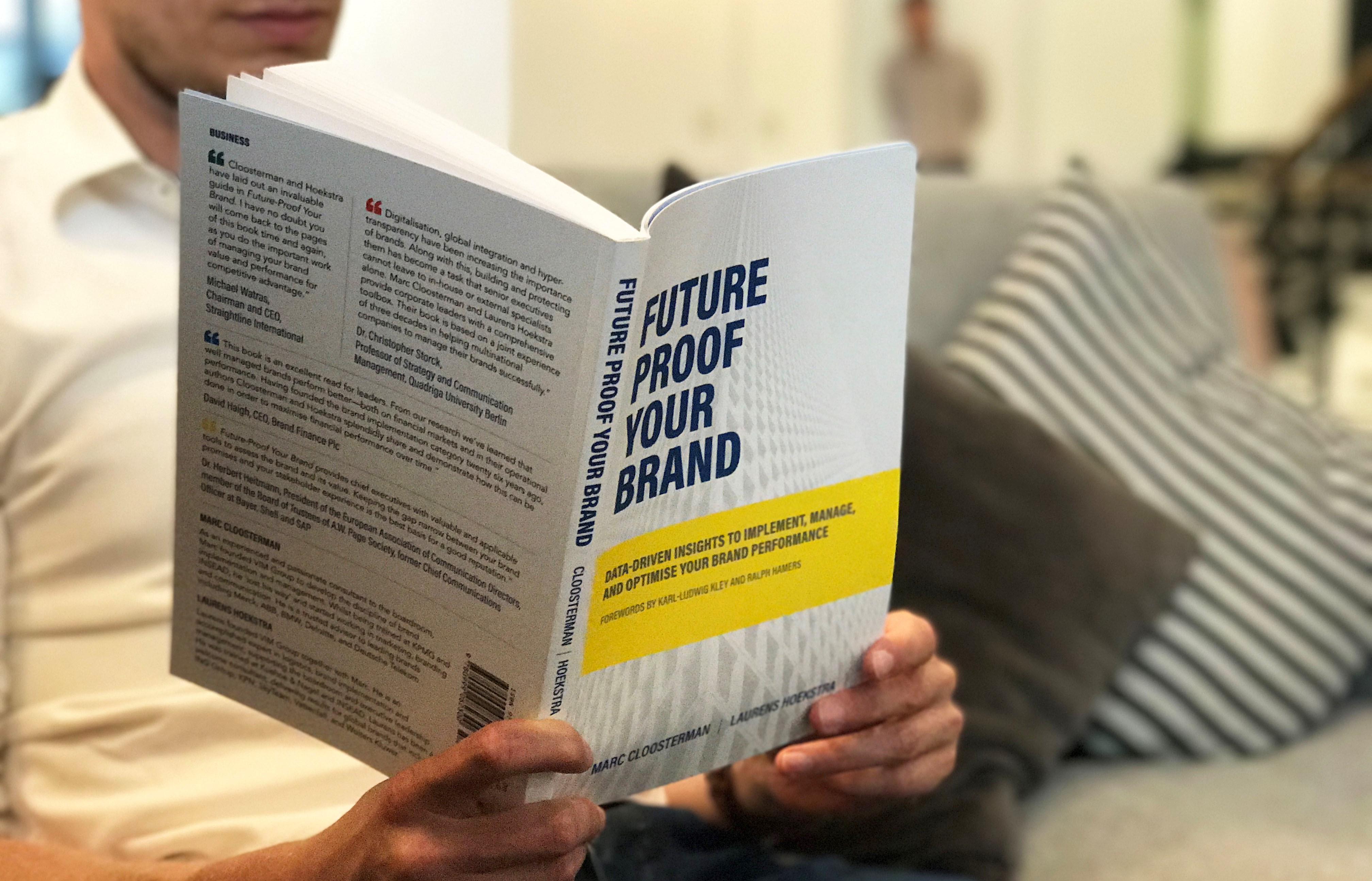Formula for the future

‘Future-Proof Your Brand’ was launched in July this year during the annual summit of the European Association of Communication Directors. Authors Laurens Hoekstra and Marc Cloosterman have laid out their unique approach to brand management for the future – coming at it from the business administration perspective. Transform magazine has spoken with the authors, and here’s their synopsis of the book’s most important insights
Our purpose at the outset was focused. Brands are an organisation’s most important intangible assets, and their management is absolutely critical. According to Brand Finance in 2017, brands account for 18% of the top 500 global brands’ market-value. Traditionally, brands have been created by agencies, and brand management has been undervalued. Fortunately, that mindset is now shifting, and we are pleased to have been part of the effort to build awareness about the value of brands. Our goal for ‘Future-Proof Your Brand’ is to help you deliver and manage brand change – continuously. From our 25 plus years of experience, we have found that smart integration of data-driven insights, mission-critical logistics and predictive analytics for future change make that delivery possible and successful.
We began with a deep understanding that strong brands drive competitive advantage and shareholder value. Research by respected organisations supports this fact. Brands are built from the inside out, helping you recruit and keep the best employees who are essential to your marketplace success.
Ready or not, your business is being disrupted, impacting all aspects of your brand. There are four innovations that will both challenge and inspire are. The first is that fifth-generation wireless will be standard. The onset of 5G solves the issue of not having enough data speed; bandwidth will no longer be a limitation. Second, artificial intelligence and machine learning will become prevalent. Think of services like Google Now or Amazon Recommendations – from analysing data today, to predictive analytics tomorrow and artificial intelligence is already reaching into healthcare and defence and will reach into other industries, led by technology companies like ABB, Siemens, General Electric and others. Third is the internet of things as devices will connected with each other digitally – always. Finally, virtual, augmented, and mixed reality, a hype in current gaming, will be relevant to mainstream businesses, tomorrow – radically changing the possibilities for new customer experiences. Imagine the cost of refurbishing an auto manufacturer’s dealership, and imagine how that changes when VR/AR and MR reach maturity.
These will have consequences on organisations and their branding. There will be increased transparency as communications must start internally, before taking or bringing the branding to the outer world. Continuous change will require an agile organisational set-up to deal with the new dynamics. The full availability of data will provide more real insight than ever when unleashed and used properly. Also, data-understanding and interpretation have traditionally not been incorporated in the curricula of strategic communications and marketing directors, but that is changing. Totally new brand experiences will continue to emerge offering opportunities to disrupt traditional customer and company journeys. Community thinking will prevail over policing the brand which will be a huge challenge for organisations as they’ll have to reassess and define their brand governance.
We’ve addressed 14 topics in the book that are most common in our conversations around brands with boards. Two of these are as follows.
First, how band licensing and brand valuation affects the C-level debate: Always, when talking with board members, they want to understand how the financial value of brands can be grasped, and how it relates to the necessary investments over time. They understand brand is their most valuable intangible asset.

"Brands are built from the inside out, helping you recruit and keep the best employees who are essential to your marketplace success"
Second, brand governance and management return on investment (ROI): How brands are being orchestrated over time has the attention of senior management, much more than the creation of a brand. Branding is moving at a rapid pace. Organisations and consumers expect consistency and coherence. For brand governance, how you organise the branding, means that reassessment is needed from simply policing the brand to community thinking. This will have implications on an organisation at strategic, tactical and operational levels.
Our brand life cycle model translates our vision of the way you can organise your brand manifestation. Over the years, we’ve developed two proprietary processes that have achieved results for 1,200 plus organisations around the globe.
Let’s have a closer look at the overarching approach for brand performance improvement. The way you organise your brand directly influences the brand manifestation. Our straightforward process facilitates decisions that impact your employees, customers, and prospects. Our process has been derived from our brand life cycle model. Within the model, brand organisation has a central role. It then fans out through brand management and brand manifestation into brand performance across all touchpoints and channels. Continuous measurement across all dimensions provides the right insight for an optimised brand performance with all stakeholder groups.
In assessing the current and desired situation, what we call the status quo, we use our brand performance scan. We’ve benchmarked brand management at approximately 50 organisations, and created a scoring based on 5 dimensions of brand management – versus the benchmark.
The dimensions are: internal organisation, brand strategy, brand development, brand implementation and brand evaluation.
With the results of the brand performance scan, one gets the insights and actions to improve brand performance over time, which are then detailed in steps two to four. A specific insight we’ve obtained is that most brands have data on branding, the problem is they have so much they often don’t know where to start in order to translate that data into insights. This is where the development of a brand dashboard delivers a solution – which is step four in the brand performance improvement.
Boards regard brand as their most valuable intangible asset and treat it as such. The top concerns of board and C-suite are usually questions about investments and costs, risk, timing, and return on investment. We address these concerns to help you move forward with confidence. The book is a collection of our methods and solutions for solving brand implementation and management challenges. Choosing aspects you need from ‘Future-Proof Your Brand” and putting them into practice will help you achieve your desired results.
Future-Proof Your Brand is written by Marc Cloosterman and Laurens Hoekstra
For more from Transform magazine, follow us on Twitter @Transformsays












